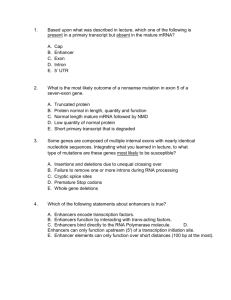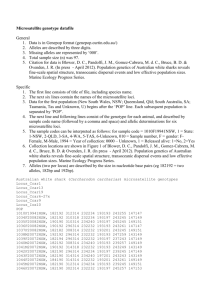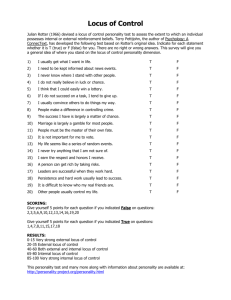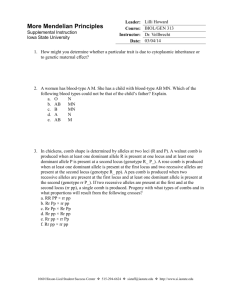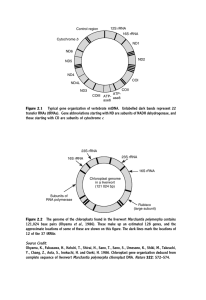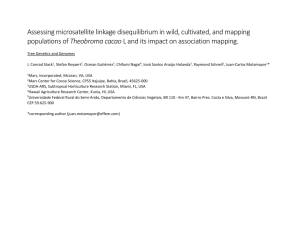Using DNA markers for the identification of
advertisement
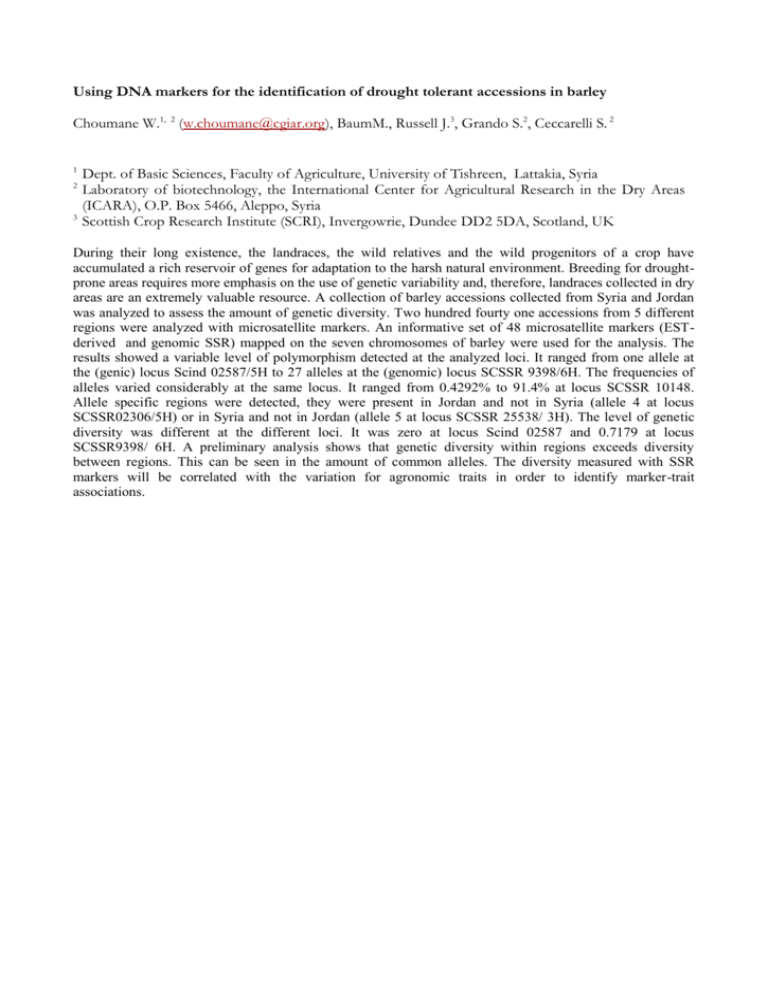
Using DNA markers for the identification of drought tolerant accessions in barley Choumane W.1, 2 (w.choumane@cgiar.org), BaumM., Russell J.3, Grando S.2, Ceccarelli S. 2 1 2 3 Dept. of Basic Sciences, Faculty of Agriculture, University of Tishreen, Lattakia, Syria Laboratory of biotechnology, the International Center for Agricultural Research in the Dry Areas (ICARA), O.P. Box 5466, Aleppo, Syria Scottish Crop Research Institute (SCRI), Invergowrie, Dundee DD2 5DA, Scotland, UK During their long existence, the landraces, the wild relatives and the wild progenitors of a crop have accumulated a rich reservoir of genes for adaptation to the harsh natural environment. Breeding for droughtprone areas requires more emphasis on the use of genetic variability and, therefore, landraces collected in dry areas are an extremely valuable resource. A collection of barley accessions collected from Syria and Jordan was analyzed to assess the amount of genetic diversity. Two hundred fourty one accessions from 5 different regions were analyzed with microsatellite markers. An informative set of 48 microsatellite markers (ESTderived and genomic SSR) mapped on the seven chromosomes of barley were used for the analysis. The results showed a variable level of polymorphism detected at the analyzed loci. It ranged from one allele at the (genic) locus Scind 02587/5H to 27 alleles at the (genomic) locus SCSSR 9398/6H. The frequencies of alleles varied considerably at the same locus. It ranged from 0.4292% to 91.4% at locus SCSSR 10148. Allele specific regions were detected, they were present in Jordan and not in Syria (allele 4 at locus SCSSR02306/5H) or in Syria and not in Jordan (allele 5 at locus SCSSR 25538/ 3H). The level of genetic diversity was different at the different loci. It was zero at locus Scind 02587 and 0.7179 at locus SCSSR9398/ 6H. A preliminary analysis shows that genetic diversity within regions exceeds diversity between regions. This can be seen in the amount of common alleles. The diversity measured with SSR markers will be correlated with the variation for agronomic traits in order to identify marker-trait associations.


